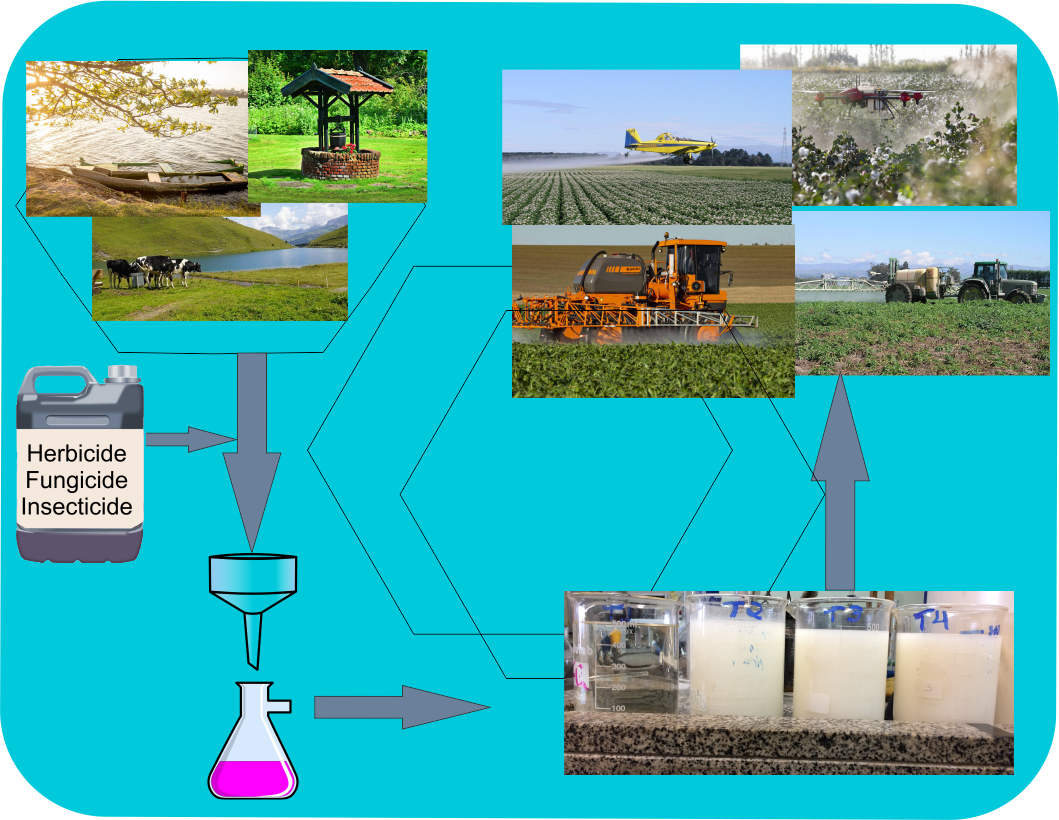Physical-chemical properties of spray syrup in tank-mixing multiple pesticides and water sources used in grain farming
DOI:
https://doi.org/10.48162/rev.39.072Keywords:
application technology, water types, plant protectionAbstract

This work evaluated physical-chemical properties of spraying syrup formulated with different water types and using or not tank-mixing pesticides. The experimental design was completely randomized in a 4 x 5 factorial scheme (4 water types and 4 pesticide syrups + control, non-sprayed plant) in three sampling times (off-season corn, pre-planting soybean weed control, and soybean season) within one year. Water treatments consisted of deionized, well, river and weir water. Product mixing consisted of herbicide (Glyphosate 925 g a.i. ha-1), herbicide + insecticide (Imidacloprid + beta-cyfluthrin 100+12.5 g a.i. ha-1), herbicide + fungicide (Trifloxystrobin + Prothioconazole 70+60 g a.i. ha-1) and herbicide + insecticide + fungicide. Weir water presented the worst physical quality. Spraying syrup prepared with tank-mixing herbicide, insecticide, and fungicide in various combinations decreased the effectiveness of the pesticide. When associating the three pesticides, less dissolution of the spray syrup and greater risk of syrup incompatibility leads to pesticide ineffectiveness.
Highlights:
- The water type used in tank-mixing multiple pesticides affects spraying syrup quality.
- Water with the worst physical quality decreases pesticide performance.
- Less dissolution and greater risk of fungicide ineffectiveness take place when three pesticides are associated.
- Spraying syrup prepared with tank-mixing pesticides increased in the successive cultivation of soybean/corn.

Downloads
Published
Issue
Section
License
Copyright (c) 2018 Revista de la Facultad de Ciencias Agrarias UNCuyo

This work is licensed under a Creative Commons Attribution-NonCommercial-ShareAlike 3.0 Unported License.
Aquellos autores/as que tengan publicaciones con esta revista, aceptan las Políticas Editoriales.


